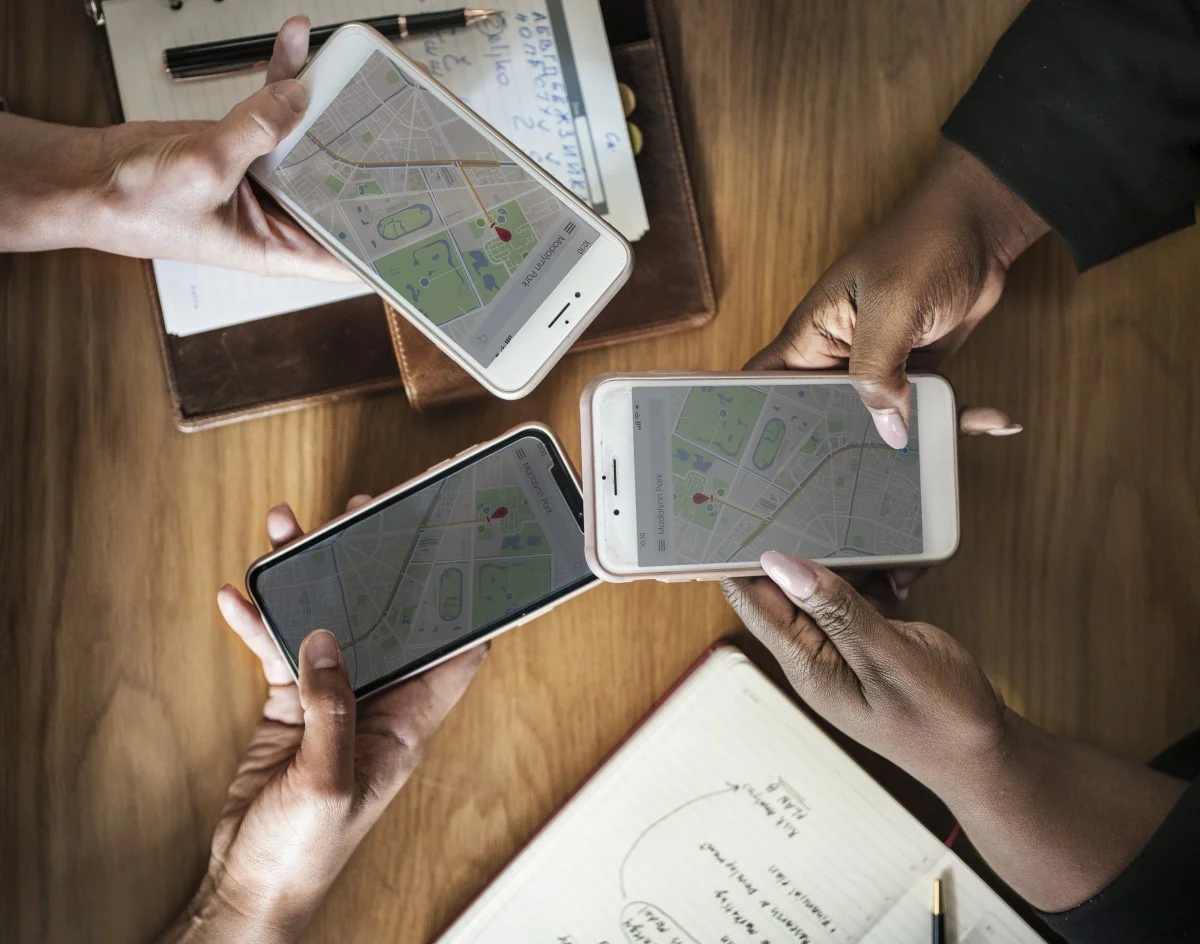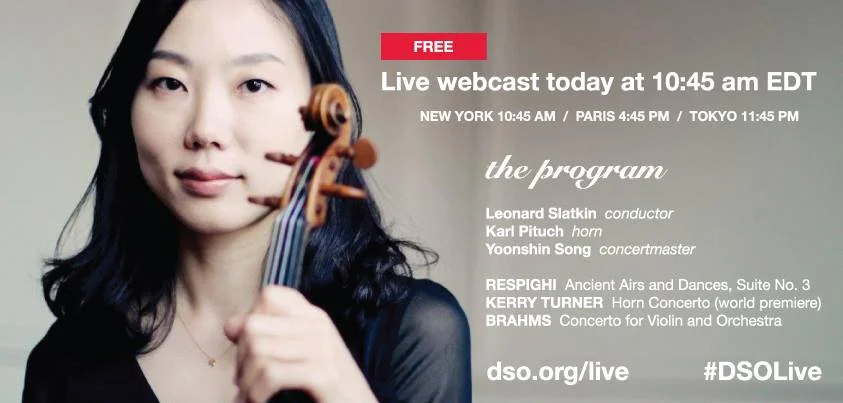Streaming platforms have revolutionized the music industry and the way consumers discover and listen to music. Companies are having to differentiate themselves by offering unique content, focusing on the artist, or developing different price models. To better understand this landscape, we examined six of the most successful platforms for a competitive analysis to understand the existing music streaming business model.
Digital Engagement Strategies for the 21st Century Museum
Shifting audience interests towards interactive and shareable experiences has led many museums to explore the potential of digital engagement tools. Given the costs and changes typically required for successful digital integration, museum staff must first ask themselves why their institution should consider investing in emerging technologies and what they hope to achieve from such an investment.
Is a Digital Map in Your Organization’s Future?
What’s Happening in Congress? Stay Informed with Countable!
How to Create Consistent & Meaningful Advocacy Efforts
Bring-Your-Own-Device: What Does Your Organization Need to Know?
Rural vs Urban: Different Arts Technology Needs
Here at AMT Lab we are a little over-fascinated with data. To that end we thought we should start sharing fun observations we are making about data created by our researchers and those across the country. Our premiere Second Sunday Survey (S3) post will share the connections between NEA surveys and the recent AMT Lab Ticketing Software Survey.
Brave New World: Symphony Orchestras & Online Experiences
Just what is an online audience? How does it differ from an offline audience? How does participating in the arts through electronic media and online channels relate to the attendance of arts events? Moreover, exactly what (and how) are symphony orchestras using these digital technologies to engage with individuals around the world?
Research Update #2: Creating Online Audiences for Orchestras
Last month, I introduced the Berlin Philharmonics’ Digital Concert Hall as a best-practice example of creating online audiences by a symphony orchestra. Indeed, we can find orchestras worldwide reaching out for audiences beyond the walls of a traditional concert hall. So let us inspect three of these orchestras—the Detroit Symphony Orchestra, the Sydney Symphony Orchestra, and the Philharmonia Orchestra (UK)—and have a closer look at some of the tools they use, how these tools are being implemented, and the resulting opportunities they create.
So You Want to Be a Mobile Optimization Star?: 4 Lessons from the Kennedy Center
Focusing your resources on a great mobile website can often be a more cost-effective route than creating an app. The Kennedy Center demonstrates the full potential of a mobile-optimized website with an efficient interface designed with patron usability in mind. As long as mobile tech remains a relatively new outlet for reaching our constituents, there are countless things we can learn from their example, but here are 4 to get you started:
To App or Not to App: That is the Question
Arts marketing and communications blogger Marc van Bree (aka Dutch Perspective) proposes that apps may not always be an ideal mobile option for arts organizations. Studies comparing web browsing and mobile apps are inconclusive regarding projected user popularity in coming years, leaving organizations with multiple possibilities for cultivating their mobile presence.
GPS Indoors: ByteLight's Indoor Positioning System at Boston's Museum of Science
Who: Dan Ryan and Aaron Ganick, the founders of ByteLight, a Cambridge, Massachusetts start-up. What: A positioning system using LED lights enabled with the capacity to broadcast location data in indoor spaces, in real time, and without WiFi or GPS. Little satellites, if you will.
The Pew Research Center's Report on Arts and Technology
The Pew Research Center recently did a survey and report about how various arts organizations use technology including the internet, social media, and mobile technology. The report confirms that the arts are adapting to the overwhelming saturation of technology, particularly the internet and social media, and are venturing into deeper levels of engagement such as blogs, podcasts, and educational content.
For Those of You Who Can't Stand It Anymore: A Homemade Cell Phone Jammer
 The invention of the cell phone and more specifically the advent of text messaging and smart phone technology have been disruptive to the traditional theatre environment. For some, even now, the thought of being distracted by the light they give off, the sound of tapping keys, and the sound a phone on vibrate is enough to cause an altercation.
Please note that actually building a cell phone jammer is against the law in the US and many other countries. Having said that, Wired recently published instructions for how to create a device that broadcasts disruptive signals on the same frequency that cell phones use to communicate with towers. These devices would be enough to disrupt a cell phone signal in a mid sized theater, thereby making the cell phone functionally inoperative.
The invention of the cell phone and more specifically the advent of text messaging and smart phone technology have been disruptive to the traditional theatre environment. For some, even now, the thought of being distracted by the light they give off, the sound of tapping keys, and the sound a phone on vibrate is enough to cause an altercation.
Please note that actually building a cell phone jammer is against the law in the US and many other countries. Having said that, Wired recently published instructions for how to create a device that broadcasts disruptive signals on the same frequency that cell phones use to communicate with towers. These devices would be enough to disrupt a cell phone signal in a mid sized theater, thereby making the cell phone functionally inoperative.
The idea around cell phone jammers isn't new, but it does call to question whether or not the performing arts community has outgrown this idea of creating a quiet, even sacred, space for performance. Innumerable performing arts institutions now give permission, even blessings, to smart phone users in some performances or in certain parts of the house. Even more, however, still ask patrons to turn off all electronic devices before a show begins.
So, is it time for a cell phone jammer or is it time to bring smart phone seats to your house?
Redefining Participation: Notes from the Newspaper Industry
The Audit Bureau of Circulation (ABC) reported its latest figures on the American newspaper industry last week, noting that in the six-month period ending on 9/30/2012, circulation figures across the industry largely held steady. Sunday circulation increased by 0.6%, while daily circulation fell slightly, 0.2%. For an industry that has experienced a drastic nosedive over the last several years (some would point to the last two decades), these figures, especially when combined with those of the preceding six months, should come as a breath of fresh air. Leading the charge—if we’re feeling optimistic—is the sharp, ongoing rise of digital circulation, which now comprises 15.3% of the total mix (up from 9.8% the year before). That print editions continue to decline comes as no surprise, but what is striking is the degree to which digital gains are boosting overall circulation figures, in some instances resulting in tremendous increases for individual publications. A prime example is The New York Times. With a total average daily circulation of over 1.6 million, The New York Times expanded its reach by 40% since 9/30/2011—all of it digital. The nation’s leading newspaper, The Wall Street Journal, which began counting paid online subscribers in its circulation figures in 2003, experienced similar, if more modest, growth (9.4%), as did the Los Angeles Times (11.9%). So too in Newark (48.1%), Tampa Bay (30.4%), Honolulu (26.3%), Cleveland (20.5%)…the list goes on.
So what happened? Did Americans begin to read online newspapers en masse over the last two years? Likely not. Rather, ABC made significant changes in its reporting mechanisms to enable newspapers to more fully capture its “cross-media” audience instead of only its print circulation. The changes, which went into effect in late 2010, include metrics to audit and report digital newspaper editions that are accessed by readers on websites, tablets, and smartphones. It’s taken the industry time to figure out both how to deliver its products to audiences in desired digital formats and how to track these multiple modes of participation. But with 24 months of that data now collected, “year-over-year” comparisons can begin to be made that produce a decidedly more nuanced portrait of the industry.
Whether or not that picture is more or less bleak than before is open to debate, certainly. For the arts, it might be an encouraging note as the industry wrestles with how to measure and evaluate online modes of participation. The most recent NEA Survey of Public Participation in the Arts (2008) inquired broadly about the subject; one question assessed online access of any performing arts (theater, music, or dance) and another the same for visual arts. As the authors of Beyond Attendance: A Multi-Modal Understanding of Arts Participation (2011) advocate, additional research is needed to gain a more detailed understanding of online participation; measurement systems likewise have to adapt. If the newspaper industry’s experience is any guide, when they do, the arts will be far better positioned to assess, and ideally to serve, its audiences.
Image Credit: Steelworkers reading the newspaper, Aliquippa, Pennsylvania, July 1938; Library of Congress, Prints & Photographs Division, FSA/OWI Collection, LC-USF33-002822-M2
iPhone vs. Android: What your Smartphone-of-Choice Says About You.
Based on over 80 million responses, Hunch blog has complied a rather…intriguing…analysis, and snazzy infographic, of smartphone users- highlighting the trends and differences between iPhone and Android users. What do you think? If you use a smartphone, do you relate to a smartphone-specific trend? How accurate/inaccurate are the findings?
An Uncontroversial Use of Cell Phones in Movie Theaters with This American Life Live
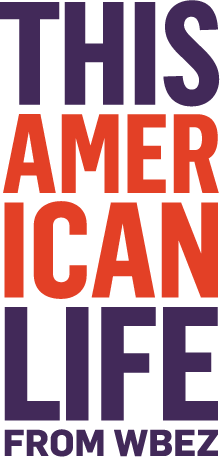 This American Life Live made us use our cell phones in theaters this last Thursday, May 10, 2012. It was great. In fact is was so engaging that we made music together. The audience stomped and snapped their fingers along to music that OK Go was playing live.
The instructions were: if you have an iPhone or an Android you were to download the This American Life Live app before coming to the show. The app was written in part by one of the members of OK Go to enable the audience to play a backup part to the music that the band was playing. Those without smart phones had a role too. They stopped and snapped their fingers. The cues for this were scrolled down a split screen (with the band on the other half of the split screen) in a similar fashion to the cues for Guitar Hero or Rock Band (though actually a bit easier to read). The warm up song was a hand bell version of Nirvana's Smells Like Teen Spirit followed by Ok GO's Needing/Getting. The theater rang with music from over the speakers but was lent depth by the sounds generated by the mobile devices. There was a palpable sense of excitement as people tried to keep up with the musical instructions and percussive stopping directions. It was easy to sense the engagement and the audience was giddy and laughter rang out after the collective performance. All in all it was a great success.
This American Life Live made us use our cell phones in theaters this last Thursday, May 10, 2012. It was great. In fact is was so engaging that we made music together. The audience stomped and snapped their fingers along to music that OK Go was playing live.
The instructions were: if you have an iPhone or an Android you were to download the This American Life Live app before coming to the show. The app was written in part by one of the members of OK Go to enable the audience to play a backup part to the music that the band was playing. Those without smart phones had a role too. They stopped and snapped their fingers. The cues for this were scrolled down a split screen (with the band on the other half of the split screen) in a similar fashion to the cues for Guitar Hero or Rock Band (though actually a bit easier to read). The warm up song was a hand bell version of Nirvana's Smells Like Teen Spirit followed by Ok GO's Needing/Getting. The theater rang with music from over the speakers but was lent depth by the sounds generated by the mobile devices. There was a palpable sense of excitement as people tried to keep up with the musical instructions and percussive stopping directions. It was easy to sense the engagement and the audience was giddy and laughter rang out after the collective performance. All in all it was a great success.
The success of this event want predicated upon the idea that the rules will have to be broken. Ira Glass stated during his introduction to the piece using cell phones that he, himself had to call the heads of two movie theater companies to clear the usage of cell phones in the theaters he was using. The convention of not using cell phones helps to create a positive experience for other patrons during a regular show. The usage of these devices as part of the show was a refreshing and creative way to break the rules and to let the cell phone juju out. Interestingly after the cell phone piece no one in the audience ventured to use their phones.
Perhaps the best and most effective way to discourage cell phone use in a theater is to provide engaging and captivating content. A sure sign that a performance is failing to engage is cell phone use which is an indicator that checking out is occurring. A recap of the This American Life Live event has links and images of the performance including a Terry Gross and Mike Birbiglia short film which is priceless.
The O: Audience Engagement at the Museum of Old and New Art in Tasmania
A recent blog post by the Walker Art Center featured some highlights from the Museums and the Web Conference that took place in San Diego earlier this month. Among these conference notes, the audience engagement practices at the Museum of Old and New Art (MONA) in Tasmania were undoubtedly innovative.
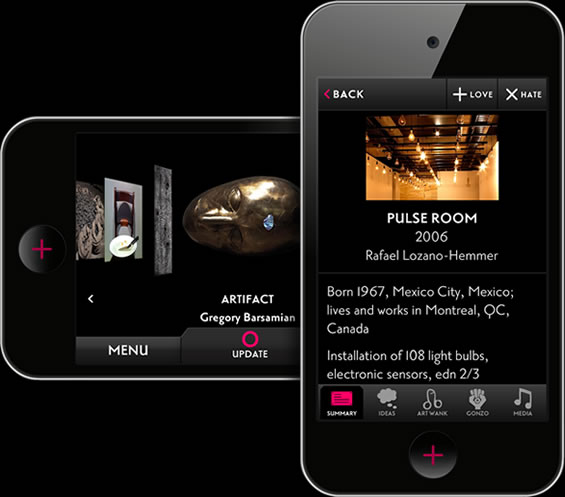 The 6000 sq ft privately owned museum, which has an “eclectic collection of 2210 antiquities and artworks,” has not a single wall label or sign to guide its visitors. Instead it relies on The O, “the first mobile interpretive solution designed to replace traditional wall labels and signage.”
The 6000 sq ft privately owned museum, which has an “eclectic collection of 2210 antiquities and artworks,” has not a single wall label or sign to guide its visitors. Instead it relies on The O, “the first mobile interpretive solution designed to replace traditional wall labels and signage.”
The O, a mobile device, equips a visitor with all the information they require including museum maps and cafe hours. Additionally, the O uses a visitor’s geo-location to suggest nearby artworks, allowing them to select the artworks they would like to know more about. It then goes on to provide them with curatorial information such as viewing notes and artist interviews. But even here, the approach is unique.
A visitor at the MONA recently wrote about her experience with The O and she mentioned how information on a particular artwork can be viewed in different styles. So Artwank presents you with information in “a formal curatorial style,” while Gonzo provides you with “personal musings on the art from MONA’s owner David Walsh.”
Besides curatorial information, The O lets a visitor interact with an artwork by leaving comments, tweeting about it, and sharing it on Facebook. It even has features that allow them to indicate whether love or hate it; art lends itself well to such extremes. Visitors also have the option of saving their O Tours and retrieving them the next day on MONA’s website. In fact, access to the museum’s online collection is reserved exclusively for those who saved their O Tours.
For the MONA’s curators and museum staff, The O unlocks a lot more than art. It provides them with a whole array of statistics that can be used to improve the visitor experience.The shuffled movement of MONA visitors using The O can provide stats on the most visited artworks, the most visited rooms, artworks with most likes, the number of tours, museum traffic, repeat visitors etc. Yes, The O is for omniscient.
According to Art Processors, the creators of The O, the device is used at the MONA by over 40,000 visitors per month. Since the MONA’s opening in January, 70% of visitors have indicated that they prefer The O to traditional signage and 80% said that the device enhanced their museum experience.
http://vimeo.com/40188545
The O improves on the visitor experience in several ways. They no longer huddle around a single text panel, reading the description at unimaginable speeds. Their path through the museum is altered by The O’s suggestions, leading them in unexpected directions and towards unseen artworks. They can revisit their tour in 3D on the museum’s website.
Museums have much to benefit from a device like The O. They may, at times, miss the reassurance of wall texts. But they can rest assured that with a device like The O, visitors will have access to a lot more than curatorial text. Conversely, the same visitors will leave behind a dotted trail that can be traced and analyzed by the museum. The O is for opportunity.
Americans are paying more for culture, opportunity looms on the technology front
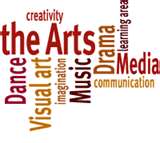 New information out from the Consumer Price Index (CPI) indicate that Americans are spending more for both technology and entertainment (a catagory that includes cultural expenditures). How can cultural organizations capitalize on this? What does this mean? Articles in both The Atlantic and NPR's Planet Money look at these trends from a more general standpoint but don't drill down on the idea for the arts. The facts presented from the Atlantic indicate that 2007 Recreation expenditures are up by 1.7% over those from the US in 1947. The NPR article states that as a percentage of household income, expenditures on Entertainment rose from 5% of the total in 1947 to 6% in 2007. This information along with the more current information from the CPI which had the Recreation Index gaining by .6% (driven in part by a 1.2% and 2.0% rise in admission to cultural events in Dec 2011 and Jan 2012) this last January give the arts sector some reason to look favorably towards the horizon. These numbers mean recovery, and recovery means opportunity for change.
The relative gains in the arts sector are paltry compared to the gains made on technology purchases in the same amount of time. The number of personal computers in homes (worldwide), for instance, grew from 152 Million from 1993 to 2002. The number of internet users in that same time frame went from 10.5 million to 716 million. The growth of other tech is no less startling by most accounts. The synthesis of the growth of technology has yet to be fully realized by the arts sector at large but this brief respite (where revenue is rebounding from recession) should be a moment where we rally to adapt.
New information out from the Consumer Price Index (CPI) indicate that Americans are spending more for both technology and entertainment (a catagory that includes cultural expenditures). How can cultural organizations capitalize on this? What does this mean? Articles in both The Atlantic and NPR's Planet Money look at these trends from a more general standpoint but don't drill down on the idea for the arts. The facts presented from the Atlantic indicate that 2007 Recreation expenditures are up by 1.7% over those from the US in 1947. The NPR article states that as a percentage of household income, expenditures on Entertainment rose from 5% of the total in 1947 to 6% in 2007. This information along with the more current information from the CPI which had the Recreation Index gaining by .6% (driven in part by a 1.2% and 2.0% rise in admission to cultural events in Dec 2011 and Jan 2012) this last January give the arts sector some reason to look favorably towards the horizon. These numbers mean recovery, and recovery means opportunity for change.
The relative gains in the arts sector are paltry compared to the gains made on technology purchases in the same amount of time. The number of personal computers in homes (worldwide), for instance, grew from 152 Million from 1993 to 2002. The number of internet users in that same time frame went from 10.5 million to 716 million. The growth of other tech is no less startling by most accounts. The synthesis of the growth of technology has yet to be fully realized by the arts sector at large but this brief respite (where revenue is rebounding from recession) should be a moment where we rally to adapt.
What do these broad economic indicators mean? Consumer confidence has been slowly recovering since the doldrums that it was in around 2008 and 2009. As budgets start to recover and earned income from ticket and admission sales start to edge up, arts leaders will be faced with decisions about what to do with the money. The temptation to return departments and programs to the pre-recession status quo will be strong; the opportunity, however, for transformation through technology to meet the larger changes in how people are consuming arts and culture should be the priority.
As many technologies are currently moving out of first generation and subsequently becoming less expensive the opportunity to develop interfacing content for them is also becoming less expensive. Application development for mobile devices is, for instance, now within the fiscal reach of the arts sector. Similarly simulcast capabilities in HD are coming into broader usage in peforming arts organizations across the country. The time to identify and implement new technology is now.
If Facebook were a country, it would be the world’s 4th largest.
So here are a handful of hints, best practices and basic strategies, as compiled from Heather Mansfield’s blog Nonprofit Tech 2.0: A Social 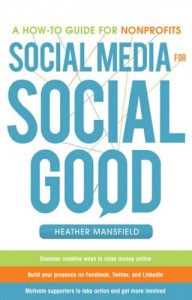 Media Guide for Nonprofits, to maximize the power of Facebook in order to connect with this entire population that is literally, just one click away. Holiday bonus: if you are searching for a special holiday gift for that certain culture vulture or arts manager, consider Mansfield’s recently published how-to guide for not-for-profits titled, Social Media for Social Good. The perfect stocking-stuffer, this comprehensive guide details all the best practices, exemplar not-for-profits and step-by-step instructions (including handy checklists) for building your not-for-profit's online presence and brand- be it a website, an online newsletter, your "Twitter voice," a Flickr account, a YouTube channel, text-to-give technology, tablet applications, etc.
Media Guide for Nonprofits, to maximize the power of Facebook in order to connect with this entire population that is literally, just one click away. Holiday bonus: if you are searching for a special holiday gift for that certain culture vulture or arts manager, consider Mansfield’s recently published how-to guide for not-for-profits titled, Social Media for Social Good. The perfect stocking-stuffer, this comprehensive guide details all the best practices, exemplar not-for-profits and step-by-step instructions (including handy checklists) for building your not-for-profit's online presence and brand- be it a website, an online newsletter, your "Twitter voice," a Flickr account, a YouTube channel, text-to-give technology, tablet applications, etc.
1. Who is the face of your Facebook? Your Facebook page is as good as the social media manager behind it. Creating and maintaining a successful Facebook page (the rewards of which are plenty- Mansfield’s research highlights the direct correlation between the rise of online giving and the rise of social media) depends on the effort and efficiency of the person managing it. Read Mansfield’s blog entry on the 11 qualities of an effective social media manager to be sure your Facebook page is in the best hands possible.
2. Conquer the laggards. Still trying to convince certain skeptical colleagues that this “Facebook thing” is not just a fad? Collect, organize and present to these latecomers the statistics on social media usage (start with a digestible, easy and straight-forward approach, perhaps the video featured above), the trends with rising generations and the shift toward online giving. Still not buying it? Show them what other not-for-profits are doing on Facebook. If you do not join the Facebook community, you are doing your organization a great disservice by becoming less competitive and visible in the not-for-profits sector.
3. You must give some to get some. "Like" other not-for-profit’s on Facebook and engage in activity on their page, with sincerity and moderation of course. Comment on status updates, "like" new posts and respond to news, questions, and comments posted. Not only will you benefit personally from interacting with another not-for-profit and its cause, but by engaging on its wall, you promote your own organization, brand and Facebook page, encouraging Facebook users to explore more about you.
4. Share the love. When updating your own statuses or posting news and comments, be sure to tag any organization you mention (if, and hopefully, they have a Facebook page). This way, your update or post is posted to that organization's wall. Just one more way to put yourself out there…
5. At the bottom of any mass e-mail or automated e-mail response, include a “Like us on Facebook” link to remind your supporters of your presence on Facebook and to give them the opportunity to stayed informed on your progress and activities.
6. Evaluate and adjust. If time after time your posts go “unliked” and your statuses “uncommented,” it is time to consider a different course of action. Facebook is not a newsletter; talk with your followers, not at them. If your Facebook community is not reacting or engaging with the content you publish, evaluate what you are sharing. Is it dead-end content? Does it encourage user feedback? Save the matter-of-fact news for your monthly newsletter and press-releases. Take advantage of Facebook as a community building tool and a platform for exchange.
7. No one likes a Chatty Cathy. Too many status updates and posts per day and that “Hide activity" option on the user's News Feed becomes increasingly attractive.
8. Register for one of Mansfield’s January webinars on successful usage of Facebook and Facebook applications (or check out the other webinars offered on hot topics such as utilizing Google+, YouTube, mobile fundraising, and Twitter).
9. Someone in the office or organization needs a smartphone and needs to be on the mobile web. It does not have to be an iPhone, but in today’s 24/7 streaming news world, it is all about being and staying connected. It is an investment, but one that will be returned as mobile and online giving become the predominant trend.
10. Stay informed. It seems as though Facebook is evolving daily. Do not miss out on the possibilities and potential of the newest features, formats, and most importantly, opportunities for your not-for-profit to expand its reach. Read blogs about the newest changes and innovations in the social media world- a great place to start is right here at Technology in the Arts.
Hope you all had a wonderful holiday!







